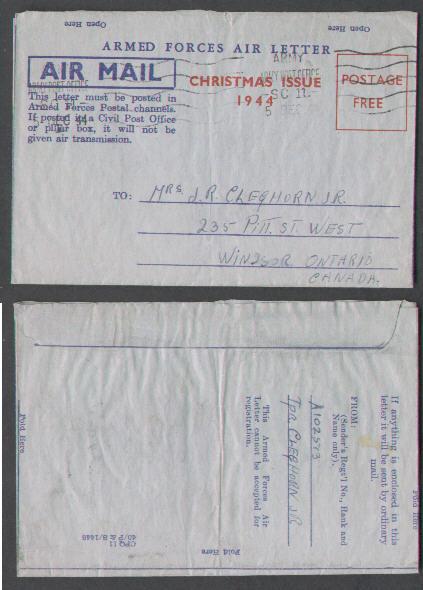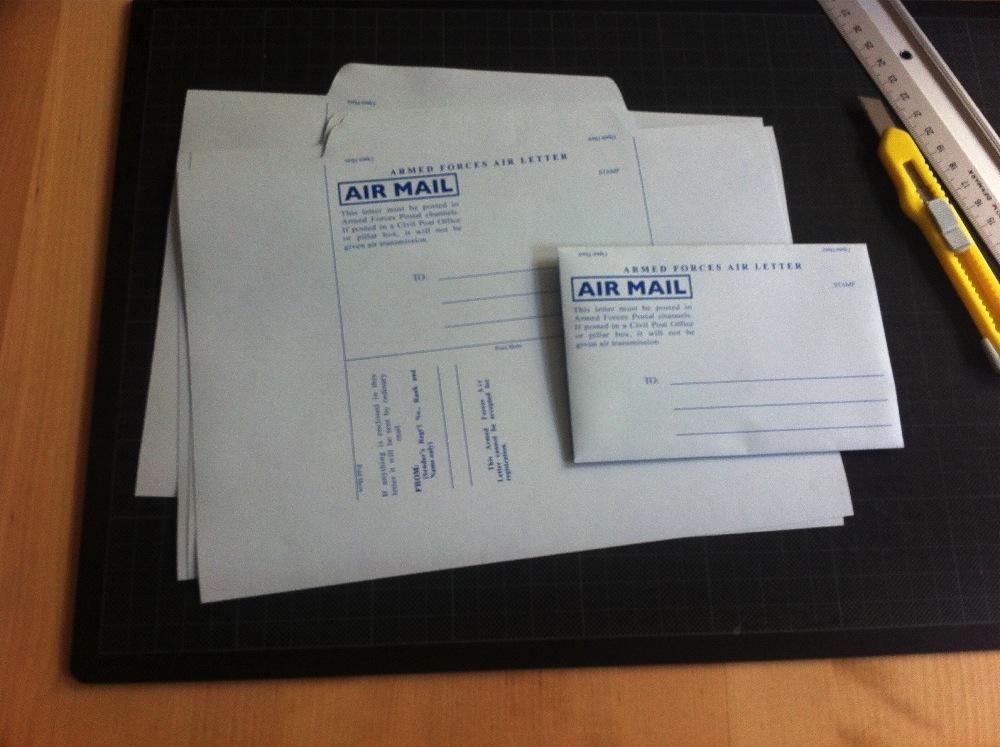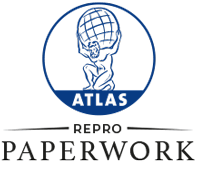
The Air Mail Letter Cards (AMLC) was a thin lightweight piece of foldable and gummed paper for writing a letter for transit via airmail, in which the letter and envelope are one and the same. Most postal administrations forbid enclosures in these light letters, which were usually sent abroad at a preferential rate. Printed warnings existed to say that an enclosure would cause the mail to go at the higher letter rate.
Early in World War II, British military forces adopted the AMLC for communication between servicemen and their families and was largely popularized by its use. Lieutenant Colonel R. E. Evans, Royal Engineers, Assistant Director Army Postal Service Middle East Force (MEF), proposed that a lightweight self-sealing letter card that weighed only 1/10 oz be adopted by the British Army for air mail purposes. He recommended its use to Sir Anthony Eden, the Secretary of State for War during his visit to the Middle East, in late 1940. By January the following year, General Archibald Wavell, 1st Earl Wavell, the Commander-in-Chief, MEF was told by Eden that “Your Assistant Director Army Postal Services may forthwith introduce an Air Mail Letter Card Service for the Middle East. Use British stamps from all countries, including Egypt.”.
Evans first saw the air letter form in Iraq, whilst touring the Commands after his arrival in the Middle East theatre. It had been introduced into the Iraqi postal service in 1933 by the then Inspector General of Posts and Telegraphs, Major DW Grumbley CBE DSO Royal Engineers. The original form, on thin paper was 124mm x 99mm in size, greyish in colour, with bluelined framing and with the designation legend on the front. It had a beautifully impressed effigy of Faisal I of Iraq and was printed by Bradbury Wilkinson.
On 1 March 1941, the air mail service between the Middle East and the UK was started, using a combination of Imperial Airways seaplanes and military transport. The private nature of the air letter ensured its popularity among its users and that popularity, with its lightness, brought about its continued use as today’s civilian air letter (aerograms) and the British military “bluey”. (see British Forces Post Office for further information).
Servicemen generally received one or two AMLC forms per week. Although forms were often postage free, markings such as “Postage Free” or “Postage Paid” were applied to a very small number of AMLCs. By war’s end, the name was officially changed to “Air Letter” and they were postage free to servicemen.

Now I reproduced the Armed Forces Air Letter which can be used by re-enactors to write their love ones. Or you could receive one from your relatives in other parts of the world. Unfortunatly I could not get hold of the old blue Air Mail paper, so I used 80 grams licht blue paper to print on for the reproductions. Nevertheless, a nice item to have with your personal stuff…
Not Available in the Shop?
Custom Orders
If you want something that is not available in the webshop, or if you have original piece of paperwork that you would like to have reproduced, or you want some paper props made for your next movie production, please get in touch me. Then I can see if I can make it for you.


